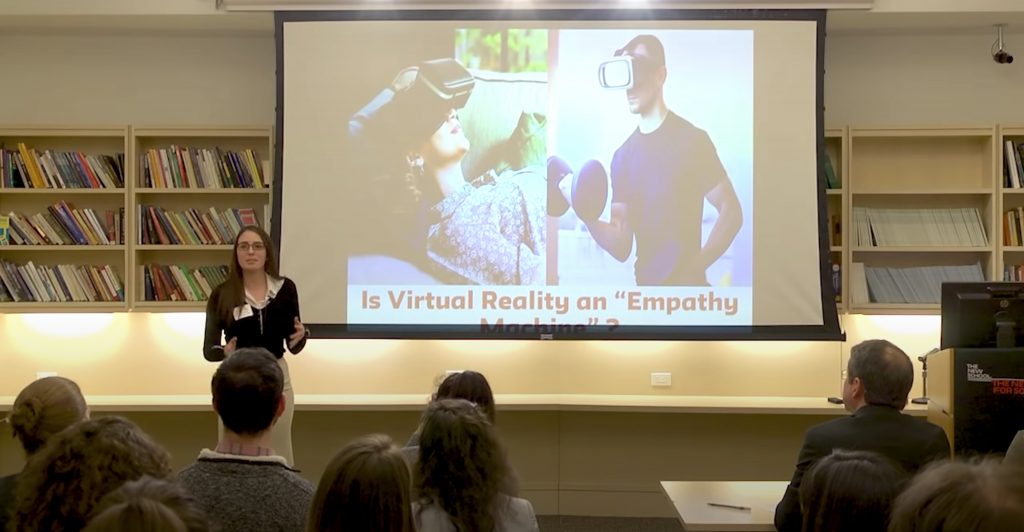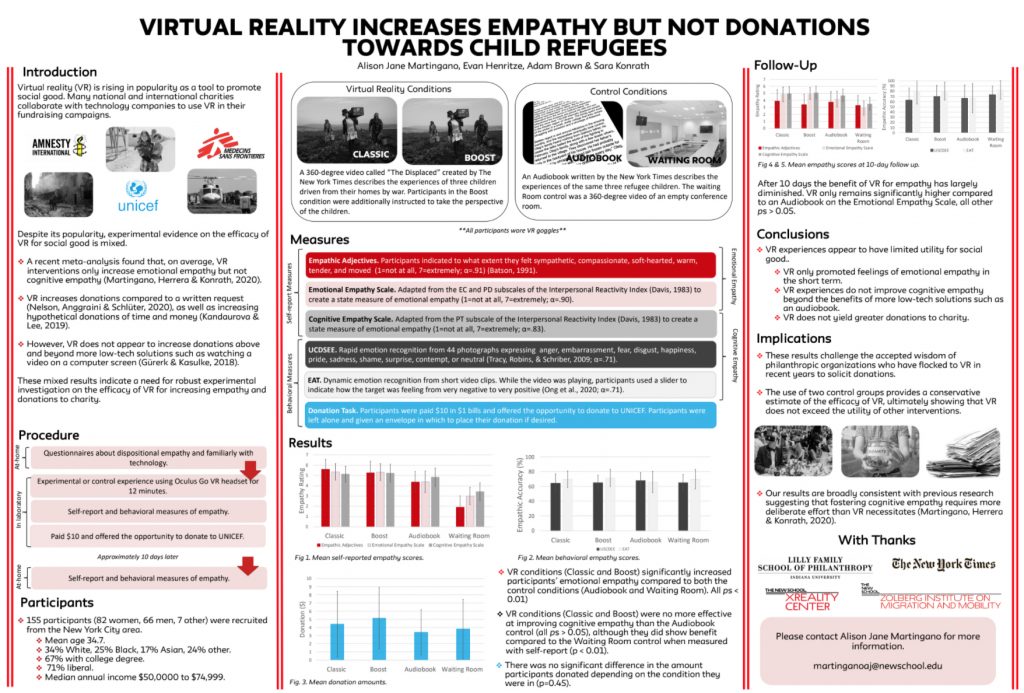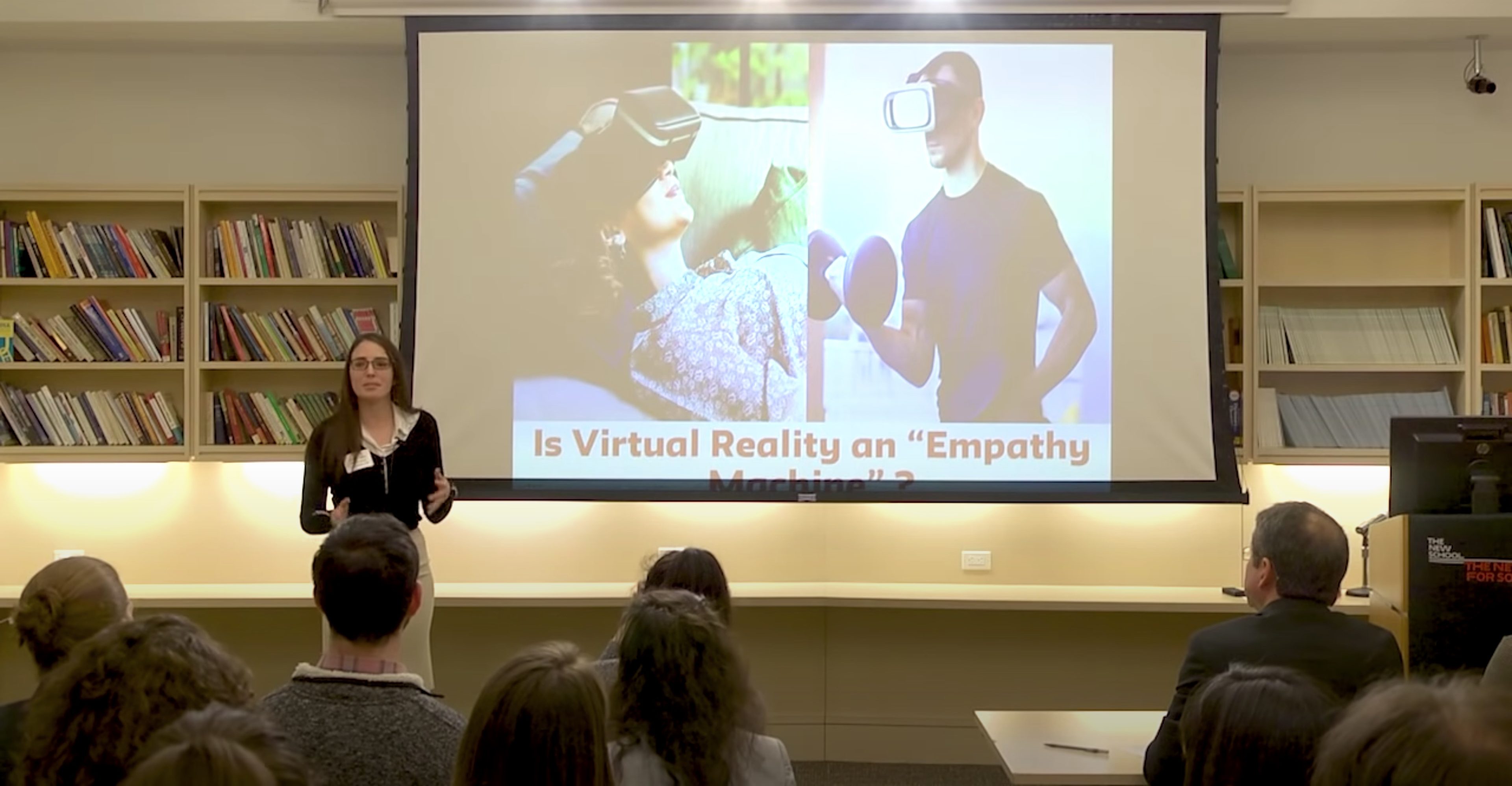In Spring 2020, in collaboration with The Zolberg Institute on Migration and Mobility Ph.D. Psychology students Alison Martingano and Evan Henritze from The New School for Social Research conducted research at the X-Reality Center to determine if VR can increase empathy and charitable donations towards child refugees.
The Ph.D. Students worked with Maya Georgieva, Director, XReality Center to design a set of stimuli using 360 Videos to undertake a VR and empathy research project. The stimuli were developed at the XReality Center and the research study with volunteers also took place in the XR Lab in early Spring 2020.

In January, 155 participants experienced one of four VR experiences: Classic, Enhanced, Audio Book, and Control. All participants wore a VR headset for 12 minutes, but critically the nature of their experience differs. Classic and Enhanced VR participants watch a documentary 360-video from the New York Times called “The Displaced,” which describes the experiences of three children driven from their homes by war. Participants in the Enhanced condition were additionally instructed to focus on understanding how the children were thinking and feeling.
Audio Book control participants read and listened to a very similar story about the same children. The Control condition participants simply waited in a virtual waiting room. In close collaboration with Maya Georgieva, Director of the X-reality center the students designed the stimuli for the different control groups. Control groups allow the researchers to pinpoint the key ingredients in an effective VR intervention: If it’s the story that is critical an audiobook should be just as effective, if the immersive 360-degree atmosphere alone that makes people feel more empathic then the waiting room should be equally effective. However, if, as we predict, it is the unique combination of immersive storytelling that is only possible with VR then participants who watch the “The Displaced” should be more empathic and donate more than anyone else.
To measure empathy and donations participants are asked to complete a series of computerized tasks, including questionnaires and behavioral tasks. For example, in one task participants listen to someone talk about their problems and their facial expressions are recorded for signs of compassion. After finishing the empathy tasks participants are paid ($10 in $1 bills) and then asked if they would like to donate any or none of their payment to UNICEF.
We excited to share the poster with summary findings of the study so far. This work was accepted to the Association for Psychological Science and we expect to share more results later in 2020!


